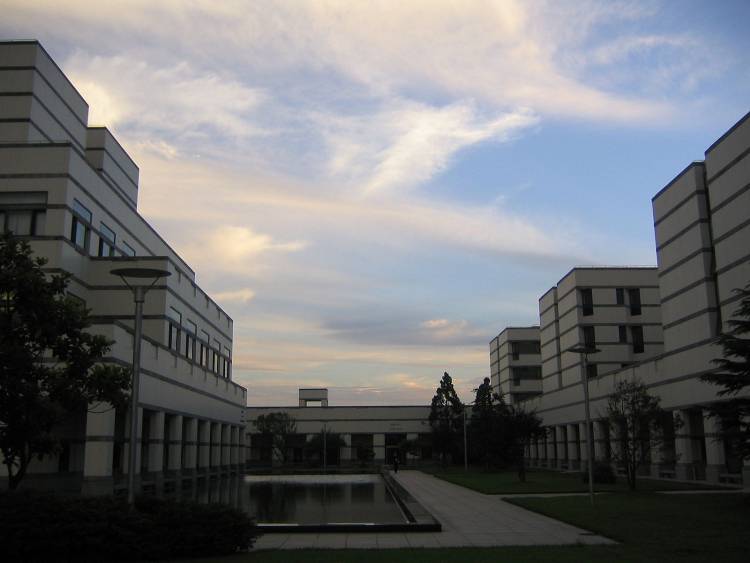If you’re considering studying for an MBA in China, you will have likely pondered CEIBS in Shanghai and HKUST in Hong Kong. After all, they are the top-ranked Asian programs by the Financial Times and placed at number 8 and 14 globally, respectively this year.
There are numerous advantages to studying in China: in some respects business has moved east and many global managers—even those based in the west—will need a firm grasp of the business culture in China. The Chinese economy is also booming, so job opportunities look good. And many MBA students at Chinese business schools covet the ability to learn Mandarin, which can set them apart from the pack in their job hunt.
Lower course costs, meanwhile, continue to prove a draw, while there is easy access to work permits for internationals in China.
But how do you pick the right course? What are the strengths and drawbacks to the MBA courses at CEIBS and HKUST?
CEIBS vs. HKUST: Location and MBA career outcomes
First of all, the location will play a major role in deciding between the two top-ranked programs, as it impacts the entire MBA experience, including career destinations.
There is a perception that Hong Kong is more international than mainland China and the former British colony also boasts a strong financial services sector with major banks such as HSBC based in the city.
 Linus Lausen, a current MBA student at HKUST, who is from Germany, says he choose the school partly because Hong Kong “brings together the eastern and the western worlds”. He also applied to CEIBS and INSEAD, of France and Singapore.
Linus Lausen, a current MBA student at HKUST, who is from Germany, says he choose the school partly because Hong Kong “brings together the eastern and the western worlds”. He also applied to CEIBS and INSEAD, of France and Singapore.
“I wanted to build a bridge between different cultures, particularly between the east and the west…While many subjects do take into account the context of Asia and China, the overall perspective of the program is truly global,” he says.
Stacy Blackman, a business school admissions consultant, says: “Two out of three graduates from CEIBS stay in Shanghai. Some 80 percent of graduates from HKUST stay somewhere in Asia. HKUST has an extensive exchange program with 60 schools worldwide, giving students an opportunity to explore internationally.”
Indeed, according to the Financial Times’ most recent Global MBA Ranking, HKUST is ranked much higher than CEIBS in terms of international mobility, meaning that the Hong Kong school’s graduates are much more likely to work in a different country from where they were before the MBA.
Blackman adds that HKUST has a stronger reputation in financial careers, and is more well known outside of mainland China. “If you want to leave mainland China, HKUST will be a stronger name on your résumé,” Blackman says.
“However, CEIBS is very prominent within China and some parts of Hong Kong,” she says. “Both schools are strong in finance, with 20 per cent of the CEIBS and almost 40 per cent of the HKUST graduating classes going into banking and finance.”
According to the most recent CEIBS MBA career report, 92 per cent of students were employed at three months. Finance was indeed the top industry of choice but about 18 per cent of the MBAs went into tech companies and 15 percent to the manufacturing industry.
HKUST boasts a similarly high employment rate, at 90 per cent last year. Financial roles dominated the employment destinations, with many MBAs going into private wealth management and investment banking. Meanwhile, 13 per cent of the cohort went into the tech sector, and 11 per cent engineering and energy.
CEIBS vs HKUST: MBA admissions requirements, selectivity and class profiles
Both schools have rigorous admissions requirements covering all the usual bases, such as recommendation letters, interviews, and GMAT or GRE score.
 Blackman says that CEIBS is more selective, admitting about 40 per cent percent of applicants compared to 50 per cent at HKUST.
Blackman says that CEIBS is more selective, admitting about 40 per cent percent of applicants compared to 50 per cent at HKUST.
Both schools boast high quality cohorts of students with an average of roughly five years of work experience. Both have average GMAT scores in the 600s, with CEIBS averaging about 30 points higher than HKUST.
HKUST is slightly smaller with 120 students enrolled per year compared to 179 at CEIBS, giving it a slightly more intimate feel, which can help to form bonds with classmates. HKUST is also a more diverse program with 90 percent of students hailing from international locations, though CEIBS is very international, too.
Lausen says: “I was looking for an MBA program with students from a diverse background – not only when it comes to nationalities but also regarding the professional background of the students and their post-MBA objectives. At HKUST this diversity is given and offers a unique learning opportunity for me.”
CEIBS vs HKUST: MBA program comparison
Both schools teach in English and are considered to be very strong curriculums, comparable to top US schools, according to Blackman. CEIBS offers an 18-month program. HKUST’s is shorter with a 12- or 16-month option.
According to a current CEIBS MBA student, the school stands out due to its hands-on leadership training. “Classes like Situational Leadership, in which we hike as a team through the Gobi Desert under many constraints, will challenge me beyond anything I experienced leading large local teams while in general management in Asia,” says Emma Devine, an American.
“Another amazing course is the ICSP (Integrated China Strategy Project), which will require my team and I to tackle a problem facing a real company in China today. Our recommendations will be presented directly to the company and have a chance of being implemented. This will provide a direct link to the business community in China.”
Her advice for choosing between CEIBS and other schools is: know your goals. “I know that I am both inspired and humbled by the Chinese culture, language, and the pace at which business moves here,” she says.
“My goal is to be a part of this dynamic environment and assist either international companies to enter the market, or local Chinese companies to expand internationally.”
Image Credits:
- "HKUST campus view looking from above, photo taken in 2012" by Hkust pao / CC BY-SA 3.0
- "China Europe International Business School (CEIBS)" by Paulo Menegusso / Public Domain










